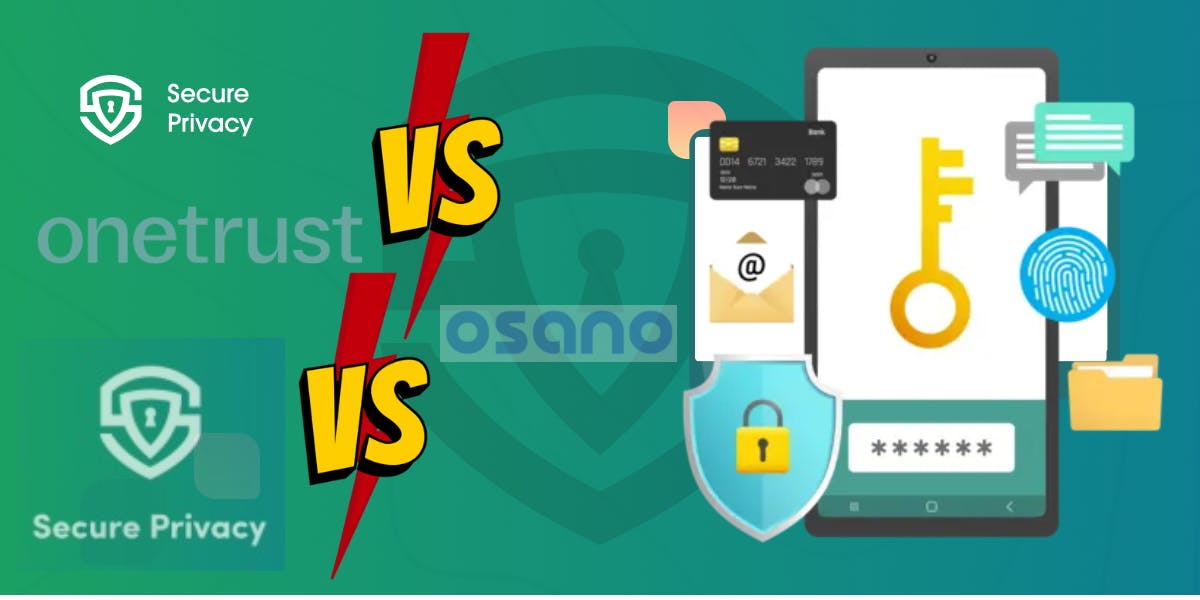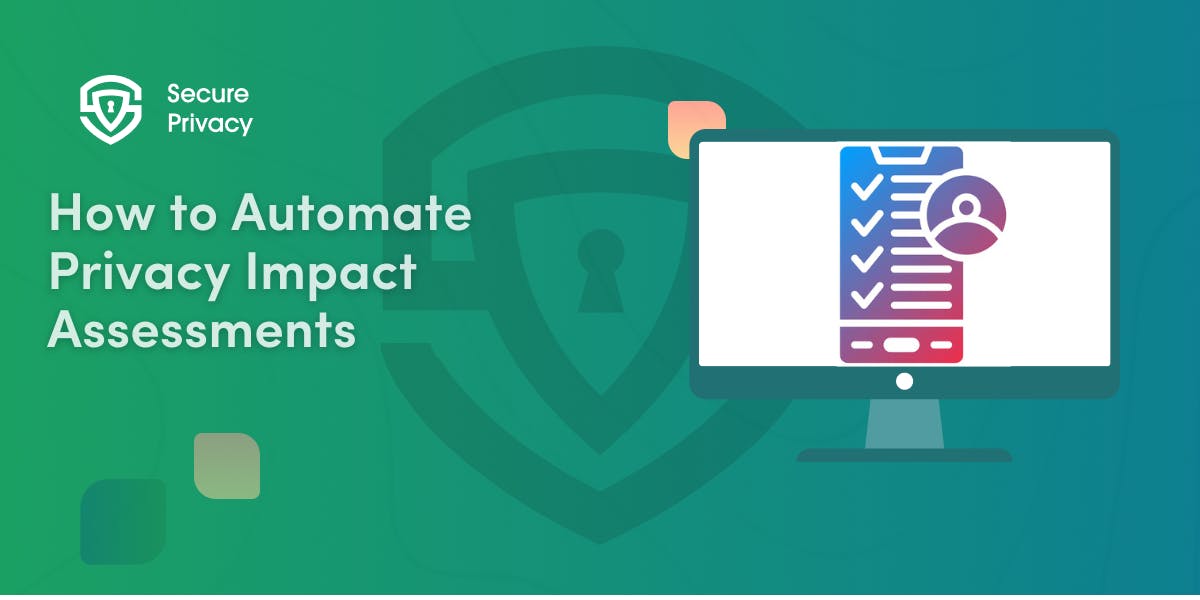Navigating Global Privacy Laws with the IAB Tech Lab Global Privacy Platform (GPP)
Explore how the IAB Tech Lab's Global Privacy Platform (GPP) simplifies compliance with global privacy regulations like GDPR and CCPA. Learn how Secure Privacy CMP seamlessly integrates with GPP for streamlined user consent management. Sign up for a free trial today!
The digital advertising landscape is undeniably dynamic, but recent years have seen a surge in complexity regarding user privacy regulations. Across the globe, a patchwork of laws like GDPR and CCPA has emerged, creating a significant challenge for companies navigating user consent and compliance.
However, a beacon of hope has emerged in the form of the IAB Tech Lab's Global Privacy Platform (GPP). This innovative initiative promises to streamline communication and ensure consistency in how user privacy signals are transmitted across the advertising ecosystem. In this blog post, we'll delve into the functionalities of the GPP, exploring its potential to unlock a more responsible and compliant future for digital advertising.
Get Started For Free with the
#1 Cookie Consent Platform.
No credit card required
What is the Global Privacy Platform?
The GPP is designed to address a major challenge in the digital advertising industry: managing the complexities of user privacy regulations across different jurisdictions.
Here's a breakdown of what the GPP is:
- Technical Framework: Think of it as a set of tools and protocols that websites, apps, and ad tech companies can use to communicate with each other about user privacy preferences.
- Standardization: Instead of each company using their own method, the GPP creates a single, unified format for transmitting user consent signals. This eliminates confusion and simplifies the process for everyone involved.
- Centralized Hub: The GPP acts as a central translator, collecting user privacy signals based on relevant regulations and converting them into a standardized format. This format is called the GPP string.
- Collaborative Effort: The GPP wasn't built in a silo. It's the result of years of collaboration between technical and legal experts across the globe, ensuring it can handle the nuances of various privacy regulations.
In simpler terms, the GPP is like a universal language for user privacy in the digital advertising world. It allows for clear and consistent communication between different players, making compliance with regulations much easier.
The GPP simplifies compliance by acting as a central hub for user consent signals. Imagine a universal translator – companies can use any CMP (Consent Management Platform) to capture user consent based on local regulations. The GPP then transforms these signals into a single, standardized format – the GPP string. This streamlines communication across the entire digital ad supply chain.
But the GPP goes beyond just standardization. It's built with flexibility in mind. The platform supports existing mechanisms like the US Privacy and IAB Europe TCF consent strings, and can readily incorporate new regulations as they emerge.
Additionally, the GPP integrates with the Global Privacy Control (GPC), a browser-level setting that allows users to opt-out of data sharing altogether.
How is the GPP different from the IAB EU’s TCF?
The IAB Tech Lab's Global Privacy Platform (GPP) and the IAB Europe's Transparency and Consent Framework (TCF) v2.0 share some similarities, but there are also key differences that impact how they are used:
Scope
- GPP: Global in reach. The GPP is designed to handle user consent signals from a wide range of jurisdictions, including the US (CCPA, state-specific laws), Europe (GDPR), and potentially future regulations from other regions.
- TCF v2.0: Primarily European Focus. The TCF v2.0 was specifically developed to address the nuances of the European Union's General Data Protection Regulation (GDPR).
Focus
- GPP: Standardization and Flexibility. The GPP's primary focus is providing a standardized format (GPP string) for transmitting user consent signals across different jurisdictions. It's also built to be adaptable, allowing for easy integration of new privacy regulations as they emerge.
- TCF v2.0: Granular Consent Management. The TCF v2.0 goes beyond just standardization. It offers a more granular approach to consent management, allowing users to express specific preferences about how their data is used (e.g., for personalization, location tracking).
Future Outlook
- GPP: Evolving Standard. The GPP is a relatively new initiative, and its future development will depend on industry adoption. However, its broader scope and adaptability position it as a potential future standard for global user consent communication.
- TCF v2.0: Continued Relevance in Europe. The TCF v2.0 is expected to remain relevant within the European market, especially for companies that need to comply with the specific requirements of GDPR.
In essence, the GPP acts as a broader umbrella that can accommodate the TCF v2.0 framework within its structure. While the TCF v2.0 will likely remain relevant in specific contexts, the GPP is expected to become the preferred solution for companies navigating the complexities of global privacy regulations.
How does the GPP affect the TCF v2.0 framework?
The GPP is designed to be the future of user consent communication, and while it won't eliminate the TCF v2.0 framework entirely, it will likely have a significant impact in a few ways:
- Reduced Reliance on TCF v2.0: The GPP offers a broader scope, encompassing not just the IAB Europe's TCF v2.0 but also US-specific regulations like CCPA and potentially future frameworks from other regions. This means companies that need to consider user consent signals across multiple jurisdictions will likely favor the GPP for its all-encompassing approach.
- Continued Support: Despite the rise of GPP, the TCF v2.0 is still expected to be available and supported by the IAB Europe. This is because the TCF v2.0 specifically addresses the nuances of European privacy regulations like GDPR. Companies solely operating within the European market may find the TCF v2.0 sufficient for their needs.
- Future-Proofing with GPP: The GPP is designed with flexibility in mind. It can be easily updated to incorporate new privacy signals and regulations as they emerge. This makes the GPP a more future-proof solution compared to the TCF v2.0, which may require more specific updates to adapt to evolving regulations.
- TCF v2.0 Integration: The IAB Tech Lab has indicated that the GPP will continue to reflect changes made to the TCF v2.0 framework. This ensures that companies already familiar with the TCF v2.0 won't be completely lost when transitioning to the GPP.
In essence, the GPP is like a broader umbrella that can accommodate the TCF v2.0 framework within its structure. While the TCF v2.0 will likely remain relevant within the European market, the GPP is expected to become the preferred solution for companies navigating the complexities of global privacy regulations.
Get Started For Free with the
#1 Cookie Consent Platform.
No credit card required
How does GPP affect the Global Privacy Control?
The IAB Tech Lab's GPP and the Global Privacy Control (GPC) work hand-in-hand to empower user control and streamline privacy compliance in the digital advertising industry. While the GPC itself isn't a legal requirement, it offers a powerful user-driven mechanism for opting out of data sales for advertising purposes. The GPP plays a crucial role in amplifying the effectiveness of the GPC.
Imagine a user who activates the GPC in their browser settings. This essentially sets a "Do Not Sell" flag on their data. Previously, this signal might not have been understood or interpreted consistently across different ad tech platforms. The GPP acts as a bridge, seamlessly integrating with the GPC. When a user activates the GPC, the GPP framework captures this signal.
Here's where standardization comes into play. The GPP translates the GPC opt-out signal into a common language – the GPP string. This standardized format ensures that all participants in the digital advertising ecosystem, from publishers and advertisers to ad tech vendors, can clearly understand the user's privacy preference.
This clear communication benefits everyone involved. Users gain confidence knowing their opt-out choice is transmitted effectively. Publishers and advertisers can easily identify users who have opted out via GPC, ensuring they comply with user preferences and avoid potential legal ramifications. Ad tech vendors also benefit from the streamlined process. The GPP string provides a clear understanding of user consent signals, allowing them to deliver targeted advertising while respecting user choices.
The GPP acts as a translator and facilitator, strengthening the impact of the GPC. While the GPC empowers users to control their data, the GPP ensures this control is effectively communicated and respected throughout the complex web of the digital advertising landscape.
What is the Multi-State Privacy Agreement (MSPA)?
The Multi-State Privacy Agreement (MSPA) is an industry agreement, not a legal document, designed to help companies comply with several new state privacy laws in the United States. It works in conjunction with the GPP. Here's a breakdown of the key points:
- Purpose: The MSPA simplifies compliance with a growing number of US state privacy laws, particularly those enacted in 2023 (California, Virginia, Colorado, Connecticut, and Utah).
- Focus: It establishes a set of standardized contractual terms related to privacy that apply when personal information is shared for online advertising purposes. These terms are designed to align with the requirements of the aforementioned state privacy laws.
- Function: Think of it as a pre-written contract that automatically applies when companies involved in the digital ad supply chain (advertisers, publishers, agencies, technology vendors) are signatories of the MSPA. For companies that don't have separate commercial agreements, the MSPA provides a baseline for privacy compliance.
- Benefits: The MSPA aims to streamline compliance by offering a standardized approach across multiple state laws. This reduces the need for companies to create custom solutions for each individual state, saving time and resources.
- Relationship with GPP: The MSPA works hand-in-hand with the GPP. The GPP provides the technical framework for transmitting user consent signals in a standardized format across different jurisdictions. The MSPA ensures these signals are used appropriately and companies comply with relevant privacy laws.
How can my business comply with and implement GPP?
Complying with and implementing the GPP involves a few key steps for your business:
- Understanding Your Needs:
- Current Practices: First, assess your current user consent collection and communication processes. Identify the regions your business operates in and the privacy regulations you need to comply with (CCPA, GDPR, etc.). Technology Stack: Evaluate your existing technology stack, particularly your Consent Management Platform (CMP). Ensure your CMP is compatible with the GPP framework. If not, consider upgrading or adopting a GPP-integrated CMP like Secure Privacy CMP.
- Integration and Configuration:
- GPP Integration: Work with your CMP provider to integrate the GPP framework. This will allow your CMP to capture user consent signals based on relevant regulations and translate them into the standardized GPP string format. Consent Notice and Opt-Outs: Review and update your user consent notice to clearly explain how you leverage user data and their opt-out options. Make sure your notice aligns with GPP requirements and integrates with the GPP's user interface (if applicable).
- Transparency and Communication:
- Privacy Policy Update: Ensure your privacy policy is up-to-date and reflects your use of the GPP framework. Explain how GPP string signals are used within your organization. Vendor Communication: Inform your advertising and technology vendors about your adoption of the GPP. This ensures they understand how to interpret GPP strings and comply with user consent signals.
- Ongoing Monitoring and Maintenance:
- Staying Informed: The GPP framework is still evolving. Stay updated on any changes or updates to the GPP specifications and ensure your CMP reflects these changes. Performance Monitoring: Monitor the performance of your GPP integration. Analyze how user consent signals are being captured and communicated through the GPP string. This helps identify and address any potential issues.
By following these steps, your business can begin to comply with and implement the GPP. Remember, this is an ongoing process. Staying informed, adapting to updates, and maintaining clear communication with all stakeholders are crucial for successful GPP adoption.
How Secure Privacy CMP supports GPP
Secure Privacy CMP, a Consent Management Platform (CMP), is built to seamlessly integrate with the IAB Tech Lab's GPP.
This means it can capture user consent signals based on the relevant global privacy regulations and translate them into the standardized GPP string format. Secure Privacy CMP acts as a bridge between publishers and the GPP ecosystem, ensuring smooth communication of user privacy preferences throughout the digital ad supply chain.
Embrace the future of privacy compliance with Secure Privacy CMP
The IAB Tech Lab's GPP is poised to revolutionize user consent communication in the digital advertising industry. Secure Privacy is at the forefront of this revolution, offering a seamless integration with the GPP framework.
Secure Privacy empowers your organization to:
- Capture User Consent Signals: Secure Privacy streamlines the process of capturing user consent signals based on relevant global privacy regulations.
- Translate to GPP Format: Our CMP effortlessly translates these signals into the standardized GPP string format.
- Bridge the Gap: Secure Privacy acts as a bridge between you and the GPP ecosystem, ensuring clear communication of user privacy preferences throughout the ad supply chain.
Secure Privacy free trial
The IAB Tech Lab's GPP is the future of user consent management. Secure Privacy CMP is built to seamlessly integrate with this future.
Sign up for a free trial and experience the power of a future-proofed privacy solution.
Get Started For Free with the
#1 Cookie Consent Platform.
No credit card required

OneTrust vs Secure Privacy vs Osano: Privacy Governance Platform Comparison
Choosing between OneTrust vs Secure Privacy vs Osano determines whether your privacy program achieves genuine governance maturity or merely checks compliance boxes. OneTrust dominates enterprise segments with €290 million in GDPR fines imposed partly due to organizations lacking proper consent infrastructure. Osano targets mid-market simplicity. Secure Privacy differentiates through AI-powered automation delivering 60-80% faster DPIA completion while supporting 130+ global privacy laws in unified pricing.
- Legal & News
- Data Protection

Do Not Track (DNT): Why the First Browser Signal Failed
In 2012, Do Not Track (DNT) promised a simple solution: a single browser setting that would tell every website to stop following you across the internet. Major browsers adopted it within months. Millions of users enabled it. Yet by 2019, the standard was officially dead, and browsers began removing the feature entirely.
- Legal & News
- Data Protection

How to Automate Privacy Impact Assessments
Your privacy team receives 50 new processing activity requests monthly. Each requires comprehensive risk assessment documentation. Manual workflows using spreadsheets and email coordination consume weeks per assessment. Business stakeholders complain about delays. This operational reality drives organizations to automate privacy impact assessments (PIAs and DPIAs).
- Legal & News
- Data Protection
- GDPR
- CCPA
